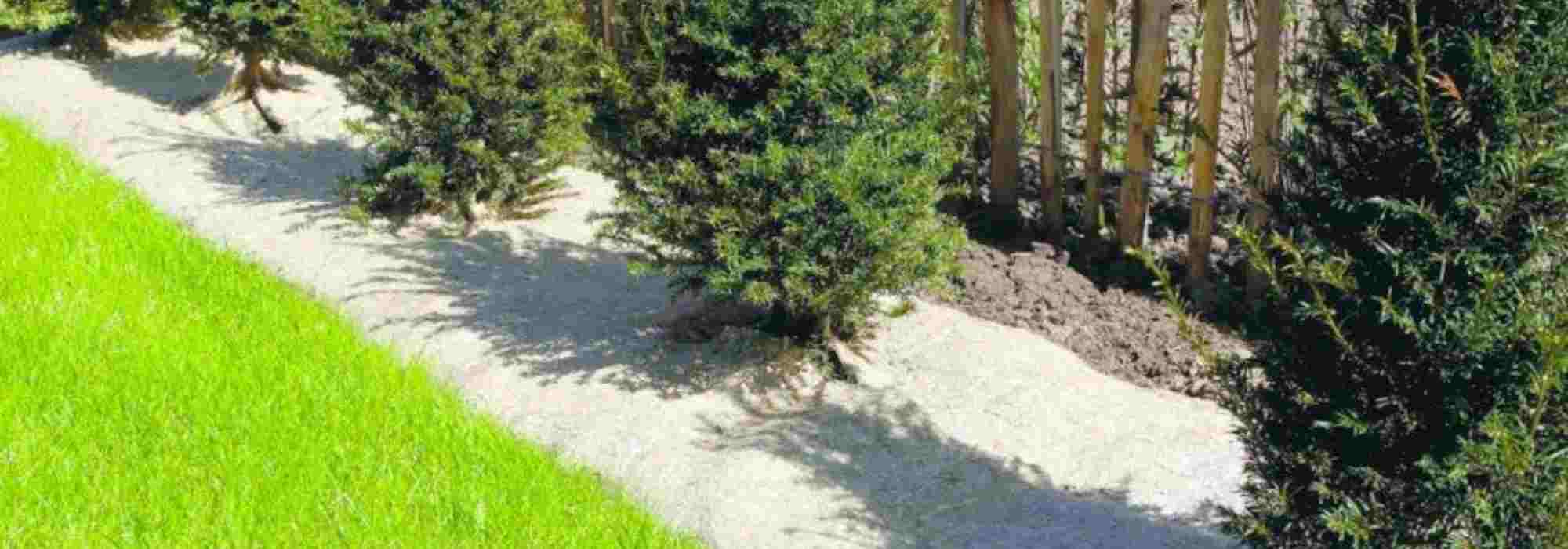
Flax, hemp, jute, wool… what are these new biodegradable mulching fabrics?
Alternatives to traditional landscape fabric
Contents
Mulching options are numerous: you can choose organic materials (straw, lawn clippings, bark, shredded branches…), mineral and even… synthetic in the case of synthetic mulch fabrics. But there are other types of mulching fabrics or felts that are entirely biodegradable. These mulch fabrics are made from jute, coconut fibre, flax, hemp… What are their advantages compared with synthetic mulch fabrics? Which type of biodegradable mulch felt should you choose? This will be the subject of this advice sheet.
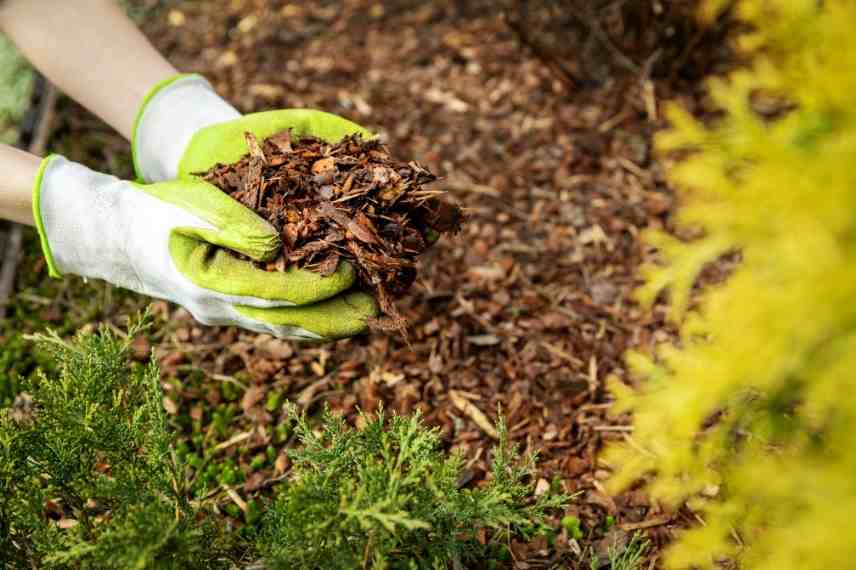 Mulching is a habit every gardener should definitely adopt!
Mulching is a habit every gardener should definitely adopt!
Why mulch? Quick reminder
Bare soil in the garden must be strictly avoided: it is bad for plants and for soil biology. Mulching offers many advantages:
- Limits proliferation of adventive plants;
- Reduces water loss and keeps soil cool;
- Prevents soil erosion (washing out of fine solids and leaching of soluble elements) and formation of a surface crust;
- Creates a “thermal buffer” by releasing at night some of the heat stored during day;
- Prevents mud splashes on vegetables and fruit;
- Feeds soil as organic mulches decompose;
- Offers undeniable aesthetic appeal.
All these advantages make it clear that mulching would be hard to do without. However, let’s not forget also ground-cover plants, true “living mulches”!
Oli’s note: lessivation is the washing away by water of fine solid particles (such as clays), whereas lixivation is the washing away of particles soluble in water (such as nitrogen, phosphorus or potassium).
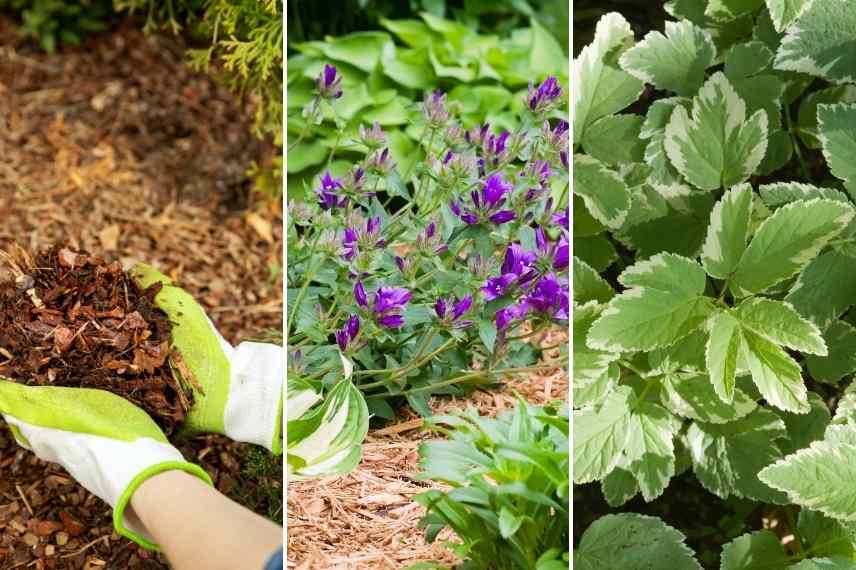
Mulch using woodchip, shavings, or ground-cover plants (here Aegopodium)
Read also
Mulching: Why? how?What materials are used to make biodegradable mulching fabrics?
Several types of biodegradable mulching fabrics or felts exist depending on material used.
- Jute : produced from two tropical herbaceous plants, jute is therefore not a local product. However, jute slabs or rolls are very effective as mulching. Often with considerable thickness (between 8 and 10 mm), jute nevertheless allows rainwater to pass through and proves to be an excellent thermal insulator. Jute breaks down in around 24 months on average. Be careful, thickness and texture of jute make it difficult to cut, you will need a utility knife;
- Wool : sheep’s wool is sometimes produced in France. Two major advantages to this type of mulching: lightness of material therefore easier to lay and, above all, a longer lifespan than fabrics made from plant fibres. Expect around 36 months at least. Breakdown provides nitrogen and proteins;
- Hemp : often produced locally (France and Belgium), hemp provides excellent water retention and good opacity, which greatly limits germination of adventives. Easier to lay as a slab than as a roll given its thickness (around 5 mm), hemp slabs can last between 12 and 24 months depending on soil and weather. Its breakdown effectively improves soil by producing quality humus without acidifying soil;
- Flax : better known as conventional mulch, French-grown flax can also be woven and laid as a slab or roll. Breakdown will occur fairly quickly between 12 and 24 months and will improve soil structure by creating good humus;
- Coconut fibre : coconut fibre felts, simply called “coco felts”, are the most durable over time. They can resist between 5 and 10 years of longevity depending on soil life and weather. Coconut fibre is as effective as other plant fibres for mulching, but is much more expensive to buy.
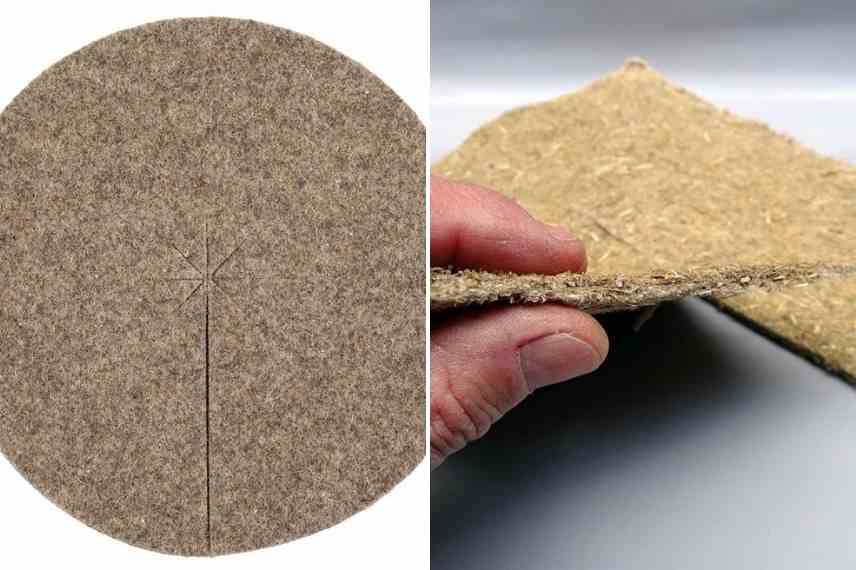
Wool mulching disc on left, and split hemp mulching slab on right
There are now materials “composite” for these types of mulching fabric or felt: such as chanvrelin, 70% hemp and 30% flax, which combines qualities of both plant fibres. Strong, light, retaining moisture and allowing water to pass through, excellent at blocking adventives, chanvrelin is also perfect for improving soil structure and soil life as it breaks down.

Natural chanvrelin mulching
In summary, jute, hemp and flax are perfect for planting perennials (groundcovers or not), strawberry plants or small fruit trees and even for vegetable plots. Jute or hemp slabs are very practical for covering base of young trees and bushes. Wool or coconut fibre should be kept for base of hedges or any place where fabric must remain longer.
All these fabrics can be presented in rolls, slabs or small circles (collar) to place at the bases of young plants: perennials, trees, bushes and even vegetable plots. These types of mulching felt also come in different weights (g/m²): the higher the weight, the longer fabric will last, but the heavier and more difficult it will be to lay. Also, sometimes rapid breakdown of felt is a good thing: in case of planting young groundcover plants in particular or in vegetable plots.
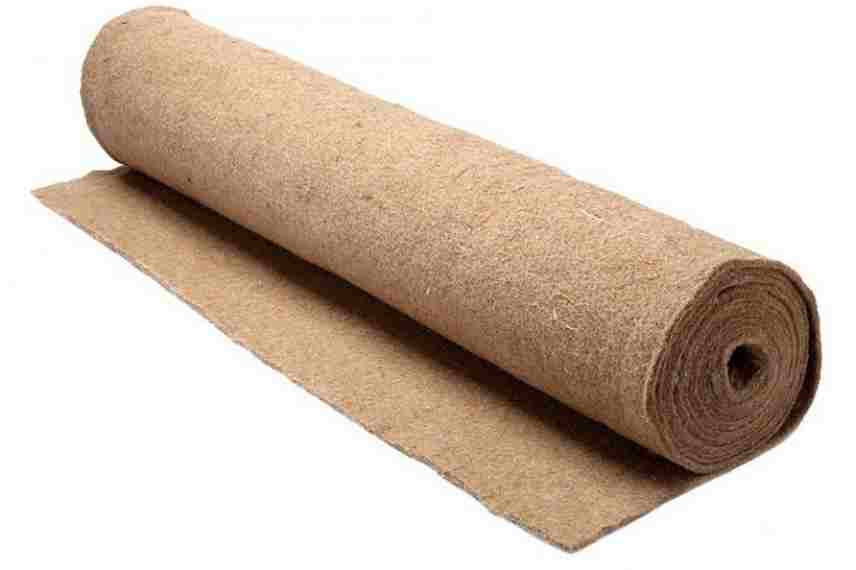
Jute felt mulching roll
In an ecological context, best solution is to choose a natural material grown and processed locally : for example, hemp or flax in our region.
→ Find all equipment you need for laying biodegradable mulching fabrics.
Discover other Biodegradable mulch fabrics
View all →Available in 1 sizes
Available in 1 sizes
Available in 4 sizes
Available in 8 sizes
Available in 2 sizes
Available in 2 sizes
Available in 2 sizes
How and when to lay biodegradable mulching fabric?
Installation of biodegradable mulch fabric should be carried out outside frost periods to make laying and securing easier. Apart from that, biodegradable mulch fabric can be installed at any time of year. Ideally install before planting: either in spring or in autumn.
Soil preparation
- Loosen and aerate soil using a broadfork or digging fork
- Remove roots of adventive plants, stones, debris of all kinds…
- Level soil using a hoe then a rake.
Laying the mulch fabric
Your soil is ready to receive the mulch. Two options are available: sheet application or roll application.
- Lay sheets or unroll your mulch fabric over area to be covered, leaving fabric to overlap edges by at least 30 cm. You should take this surplus into account when purchasing fabric.
- If you need to use several different mulch fabrics or if you are laying sheets: overlap sections by 20 cm and secure them with U-shaped staples or with specific polypropylene nails or metal ones.
Securing the mulch fabric
- On flat ground: stretch fabric as taut as possible over surface and secure it at edges with staples. Staples should be driven into edges perpendicular to fabric edge at roughly 20 cm intervals. Pull soil back over fabric edges.
- On sloping ground: at top of slope dig a small trench 20 cm deep and bury first edge of fabric. Fix fabric to soil with staples every 20 cm and perpendicular to fabric edge. Secure fabric at foot of slope with staples, checking that it is well stretched. Continue securing edges as usual.
How to plant with mulch fabric?
Fabric is laid, so now time to plant!
- Cut a cross at planting points with diagonals slightly longer than rootball of plant to be installed. Fold four flaps outwards.
- Dig a hole and place plant in hole. Firm soil around plant base and apply plenty of water.
- Either cut away excess fabric (cross flaps), bury flaps in soil, or secure flaps with staples. The last option is best, as fabric bordering plant will then be well fixed at that point.
- Subscribe!
- Contents
































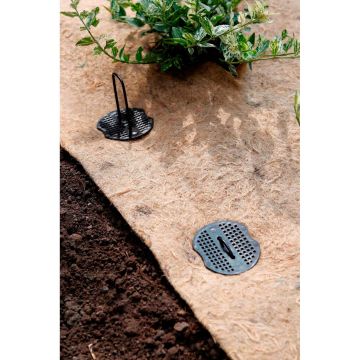
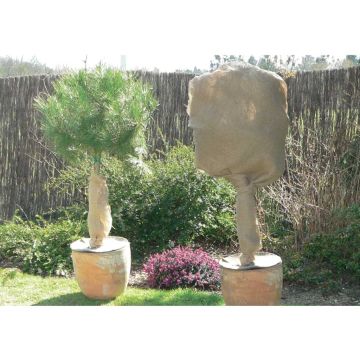
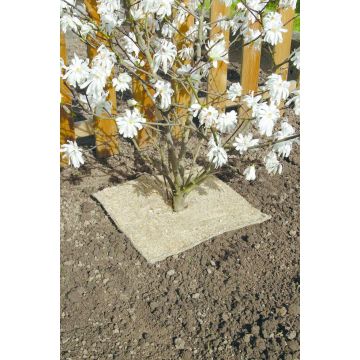
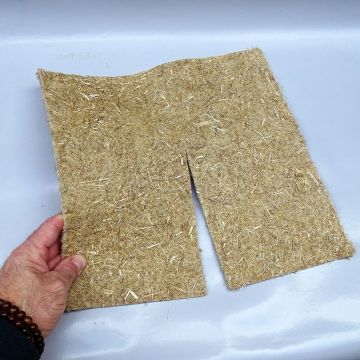
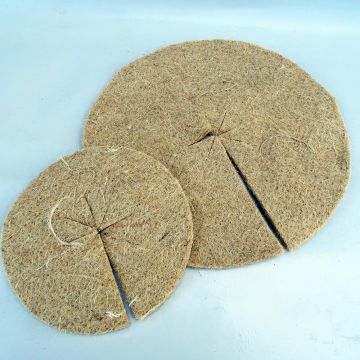
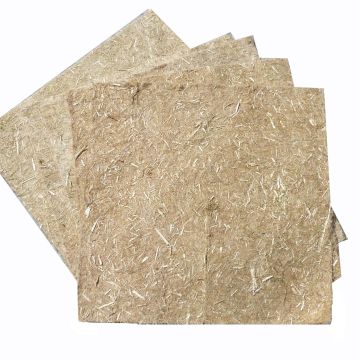
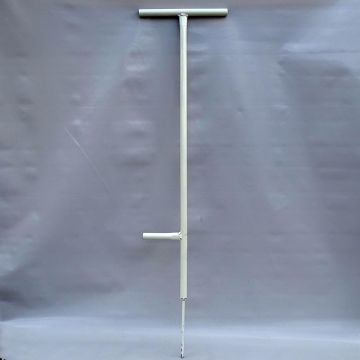
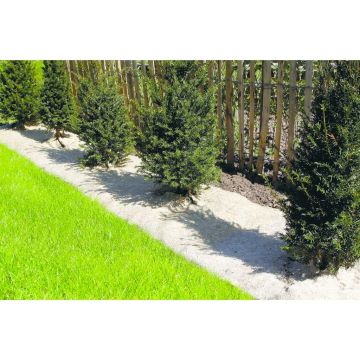
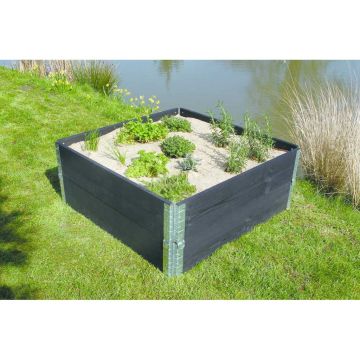
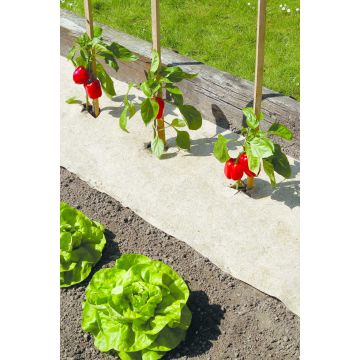
Comments